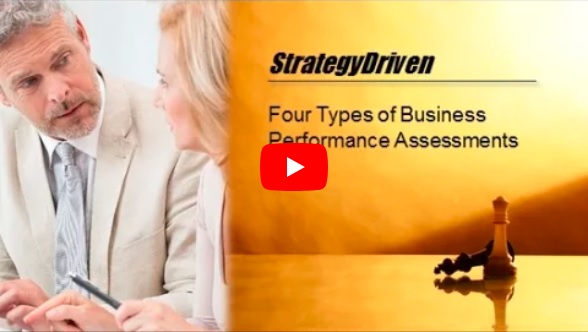The Value of Assessments

Knowing What to Change – The Value of Assessments
Change is our new way of life, and has been for some time. Change or die, but change what? One tactic to use in your Business Transformation Change Management project is assessments. If you want to know about at least one facet of what to change, read on!
This post discusses why and how to do some simple assessments and how to interpret them to guide you in knowing what to tackle first.
Why Do Assessments?
Having an objective, bias free, bonafide assessment completed will provide at least these two benefits:
1. It will either give you new information or validation for your existing selections on what should be changed. Either way is a win.
2. If wrapped in a small project where feedback is solicited prior to kickoff and acted on publicly, your assessment will build buy-in for any changes that come out of it.
The more you can hone in on agreed problem or opportunity areas the better chance of a long-term successful change being adopted to the point it generates real ROI. Well done assessments will point you in the right direction. You must be careful, however, to not jump into action before digging in to make sure you are not fixing a symptom rather than the real problem.
Basics of How to Do Assessments
Assessments are really just a formal questionnaire type of process. You can think of them as a specific type of survey or feedback. If you already have a domain of chosen candidate actions and you want to execute one of more of them from a larger list, then you should really just give them your list of possible options. For instance, if you are considering moving a meeting to the South, West, or North side of town, just list those locations. If you want a broader selection or new inputs, leave the choices open with plenty of room for text comments.
Choosing your participants. One thought is to poll everyone and consolidate all the answers. We tend to segment populations into two categories: people that are relative experts and the rest that aren’t. For experts, we ask more leading and in-depth questions. For non-experts, we ask more close ended or topic questions to get a feel for what people think that are not deeply involved in an area. Sometimes the more people you ask the more scattered the responses. Sometimes the more people you ask the more you can use your data to hone in on what matters. It is a judgment call.
Tools to Consider
SurveyMonkey – www.SurveyMonkey.com is a free (non-branded or pay SaaS branded) way of doing simple to complex surveys and capturing lots of data around them. Reports and other information is standard, the fancy features are of course in the “Pro” version.
In-House Email Survey Tools – Many email systems have built in survey or polling mechanisms. They certainly support free form text entry very well for those types of questions. They seldom have any data capabilities. Additionally, they are free and easy to learn.
Google Forms – https://docs.google.com/forms is a cloud-based option for you to create a survey document that automatically feeds into a Google Sheet that can be used like or downloaded to Excel for data purposes. Our firm has moved from SurveyMonkey to Google Forms for our internal use and much of our client uses. We still use SurveyMonkey for complex surveys.
How to Interpret Assessments
Here is the sad truth: Just because someone answers your assessment questions does not mean they will appreciate or even buy-in to their requested changes. Your chosen changes must be wrapped in Business Transformation Change Management to get even the proponents on board. Make sure your project includes communication, multiple forms of feedback, opportunities to get involved, and management sponsorship.
Simple numbers: if people suggest or “vote” for specific changes, you may as well take the Pareto route of attempting the changes with the most support. Of course you should couple this with cost/benefit analysis to ensure you are getting a decent ROI. Other ways to use your data are to drive all changes within a business function or require certain people to work on and accept them to keep the communication manageable.
Assessments and Changes – Your Thoughts?
Thoughts on how you can best use assessments to help in your change efforts that we did not touch on? Good luck and keep your eye out for ways to improve, guide, and enjoy your change projects!
Your path to business success.

